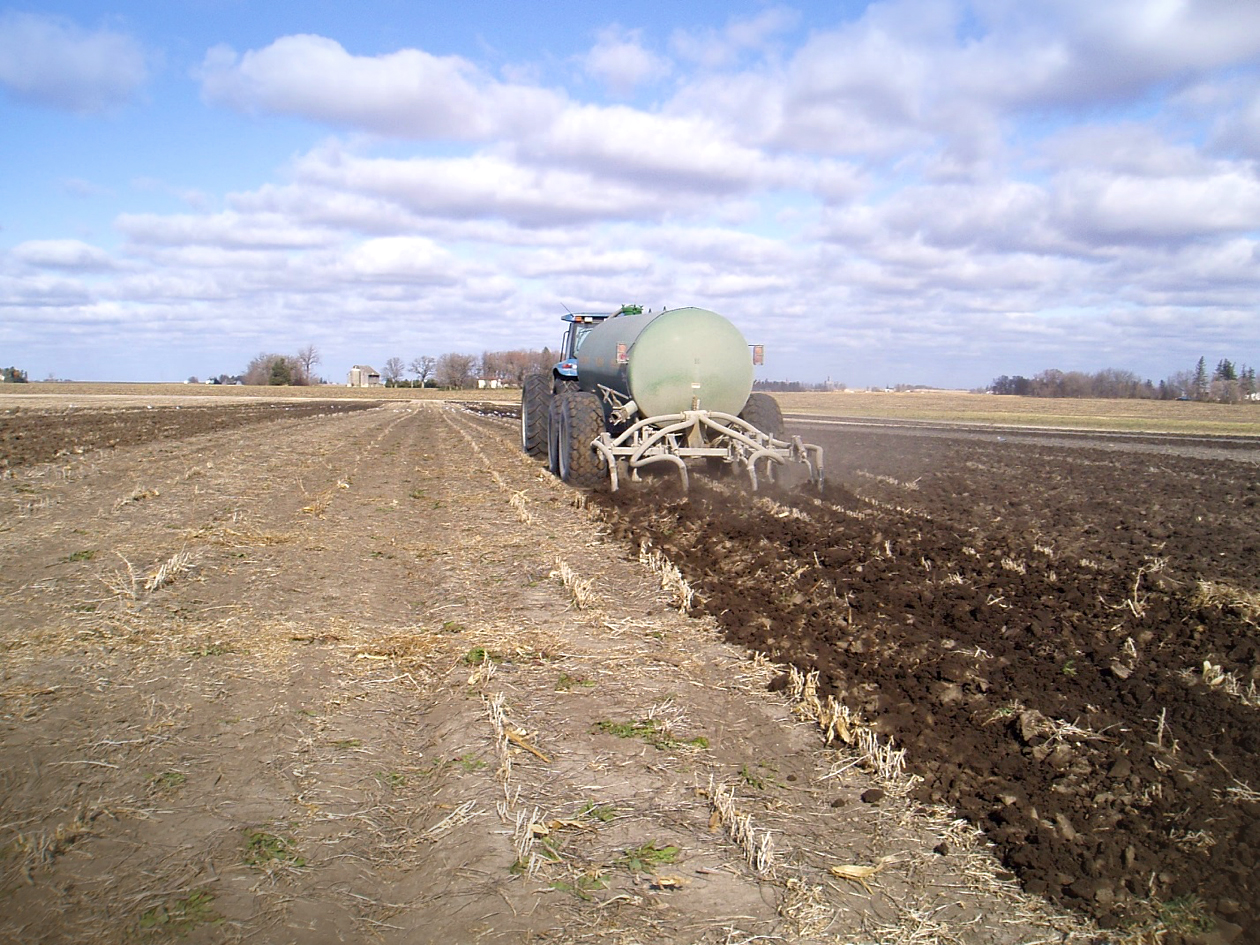Livestock manure has been considered an asset to crop production since the beginning of organized agriculture. Because these manures contain several essential plant nutrients, they contribute to increased crop yields when properly applied to soils. Thus, manure represents a valuable nutrient resource for crop producers.
Livestock producers must be extremely cognizant of potential environmental risks from manure’s nitrogen or phosphorus. An emphasis must be placed on developing and implementing manure management plans as part of an operation’s overall nutrient management plan so that agronomic and environmental issues are equally considered.
Manure can benefit an operation’s soil nutrient system and overall crop production. Crop yields are increased with manure usage. Soil nutrient levels are boosted, including micronutrients. And manure provides valuable organic matter to soil that improves soil tilth, aids in the retention of water and nutrients, and promotes growth of beneficial micro-organisms.
Traditionally, most producers in the upper Midwest of the US prefer to carry out manure applications in the fall. The potential of a very short window of opportunity for field work during a “typical Spring” make the logistics of: planting, nutrient application, and tillage very difficult. Fall manure applications should start when soil temperatures at six-inch depth are below 50 ⁰F (10 ⁰C). This ensures that crop nutrient uptake increases, and nutrient losses due to runoff and leaching are reduced.
Manure Timing Guidelines for this Fall
Fall applications of manure, either injected or broadcast, allow more time for the organic portions of the manure to break down before the plant needs the nutrients as compared to spring application. Fall applications also provide more time for potential loss of nitrogen. Fall applications of manure should be avoided on coarser-textured soils where leaching can be a threat to the water quality. We recommend that if fall application is necessary, it should be done in late fall when soil temperatures are below 50 ⁰F. Low soil temperatures prevent the nitrogen in the manure to be available for leaching losses. If manure applied to soils when soil temperatures are above 50 ⁰F, the inorganic nitrogen converts rapidly to nitrate-nitrogen, which is a very mobile form of nitrogen and increases the risk of nitrogen leaching into the ground waters.
Previous research from the University of Minnesota Southern Research and Outreach Center (SROC) at Waseca showed that liquid dairy and hog manures injected in November produced yields 10 bu/A higher than manures injected in September and October. A 2006 Cornell University study showed when applying dairy manure to corn, nitrate losses due to leaching were significantly greater when manure was applied in the early fall, especially in sandy soils. In contrast, early spring application showed the lowest nitrate losses during the three-year study period for the two soils (loamy sand and clay loam).
Manure applied in the spring has the least amount of time for loss potential to occur. However, with manures with high organic matter, the rapid breakdown of organic material in the spring is more likely to temporarily tie up some of the otherwise available nitrogen in the soil, creating some short-term nitrogen imbalances for manure with high levels of organic nitrogen (dairy and beef, or manure with bedding).
While winter application of manure to cropland is inevitable for a number of livestock producers, the practice is generally discouraged. First, in the winter, incorporation of the manure into the soil is not possible; therefore, most of the available, inorganic nitrogen will be lost. Second, the manure is lying on the soil surface, susceptible to movement by runoff into waterways, ditches, streams, etc. If manure must be spread in the winter, select level land and apply only conservative rates of manure to minimize nutrient concentrations susceptible for movement. In addition, avoid applying manure where tillage was done going up and down the slope and avoid applying during times of snowmelt. With good management, winter-applied manure will provide the same phosphorus and potassium and about a third of the available nitrogen amounts as fall- or spring- applied manure.
By: Dr. Jose A. Hernandez, Regional Agronomist, Shakopee, Minnesota

